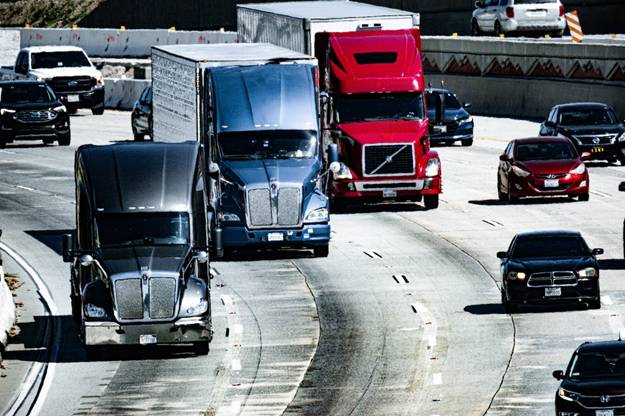Vehicle pollutants refer to the harmful substances emitted by automobiles and other vehicles during their operation. These pollutants contribute significantly to environmental degradation and pose serious health risks to both humans and ecosystems.
According to the World Health Organization (WHO), air pollution is responsible for around 7 million premature deaths each year. Additionally, in the US, transportation is responsible for the most greenhouse gas emissions, with CO2 accounting for about 97% of the overall global warming impact from transportation-related emissions.
Addressing vehicle pollution is crucial for the preservation of our planet and the well-being of future generations. The environmental consequences of vehicle pollutants are multifaceted, ranging from air pollution and climate change to water contamination and ecological disruptions.
By understanding the significance of tackling this issue, we can work towards implementing effective measures and adopting sustainable alternatives to minimize vehicle pollution and create a cleaner, healthier environment for all.

Types of Vehicle Pollutants
When it comes to vehicle pollutants, several harmful substances are emitted into the environment as a result of combustion processes in engines. While cars and motorcycles contribute significantly to pollution, it’s important not to overlook the impact of semi-trucks and other heavy-duty vehicles. These large vehicles play a crucial role in transporting goods but are also responsible for substantial emissions.
Semi-truck emissions consist of various pollutants, including carbon dioxide (CO2), nitrogen oxides (NOx), particulate matter (PM), volatile organic compounds (VOCs), and sulfur dioxide (SO2). These emissions contribute to air pollution and pose serious environmental and health risks.
To tackle the issue of semi truck emissions regulations, innovative technologies, and strategies have been developed. One example is the use of tractor-mounted aerodynamic devices, specifically designed for semi-trailers. These devices, such as automatic gap closers, can significantly reduce drag, improve stability, and increase fuel efficiency.
By automatically closing the gap between the cab and the trailer, these aerodynamic devices help to minimize air resistance. This reduces the amount of energy required to propel the truck forward, resulting in lower fuel consumption and fewer emissions. Improved fuel efficiency not only reduces the carbon footprint of semi-trucks but also translates into cost savings for trucking companies.
In addition to aerodynamic devices, other advancements in semi-truck technology include the development of hybrid and electric models. These vehicles offer reduced emissions and can operate on cleaner fuels, contributing to a greener transportation industry.
However, it’s important to note that reducing semi-truck emissions requires a multi-faceted approach. While technological innovations play a crucial role, proper maintenance and adherence to emission standards are also essential. Regular engine tune-ups, filter replacements, and ensuring compliance with emission regulations can further minimize the environmental impact of heavy-duty vehicles.
The Environmental and Health Impacts of Vehicle Pollutants
Vehicle pollutants have detrimental effects on both the environment and human health. These emissions contribute to various environmental problems, including air pollution, climate change, acid rain, ozone depletion, and biodiversity loss. Increased levels of carbon dioxide, nitrogen oxides, particulate matter, volatile organic compounds, and sulfur dioxide have far-reaching consequences.
The impact on human health is equally concerning. Exposure to vehicle pollutants can lead to respiratory diseases such as asthma, cardiovascular problems, allergies, and increased risks of cancer. Furthermore, these pollutants can cause neurological and developmental issues, affecting the well-being of individuals of all ages.
Addressing vehicle pollution is crucial to protect both the environment and human health. By taking proactive measures, we can create a cleaner and healthier future for ourselves and the planet.

Mitigation Strategies and Individual Actions
To effectively address the detrimental impact of vehicle pollutants on the environment, a combination of comprehensive mitigation strategies, regulations, and individual actions is crucial.
On a larger scale, governments and policymakers play a vital role in implementing emission standards, promoting cleaner fuels, and encouraging the adoption of electric vehicles. The development of efficient public transportation systems and sustainable urban planning is equally important. However, individual actions should not be overlooked.
By practicing eco-friendly habits such as carpooling, using public transportation, and maintaining vehicles properly, each person can contribute to reducing vehicle pollution. This collective effort, both at a systemic and individual level, holds the potential to create a significant positive change and pave the way for a cleaner, healthier, and more sustainable future.
Final Thoughts
In a world where vehicle pollutants pose significant threats to our environment and health, it’s crucial that we take immediate action. The detrimental effects of air pollution, climate change, and ecological disruption cannot be ignored. However, there is hope.
Through the development of cleaner technologies, widespread adoption of electric vehicles, and implementation of stringent regulations, we can mitigate the impact of vehicle pollutants. By making conscious choices as individuals, supporting sustainable transportation alternatives, and demanding collective action, we can pave the way for a cleaner and more sustainable future. The time for change is now, and together, we can make a difference.
- SEO Powered Content & PR Distribution. Get Amplified Today.
- PlatoData.Network Vertical Generative Ai. Empower Yourself. Access Here.
- PlatoAiStream. Web3 Intelligence. Knowledge Amplified. Access Here.
- PlatoESG. Automotive / EVs, Carbon, CleanTech, Energy, Environment, Solar, Waste Management. Access Here.
- BlockOffsets. Modernizing Environmental Offset Ownership. Access Here.
- Source: https://www.theenvironmentalblog.org/2023/06/environmental-consequences-of-vehicle-emissions/



